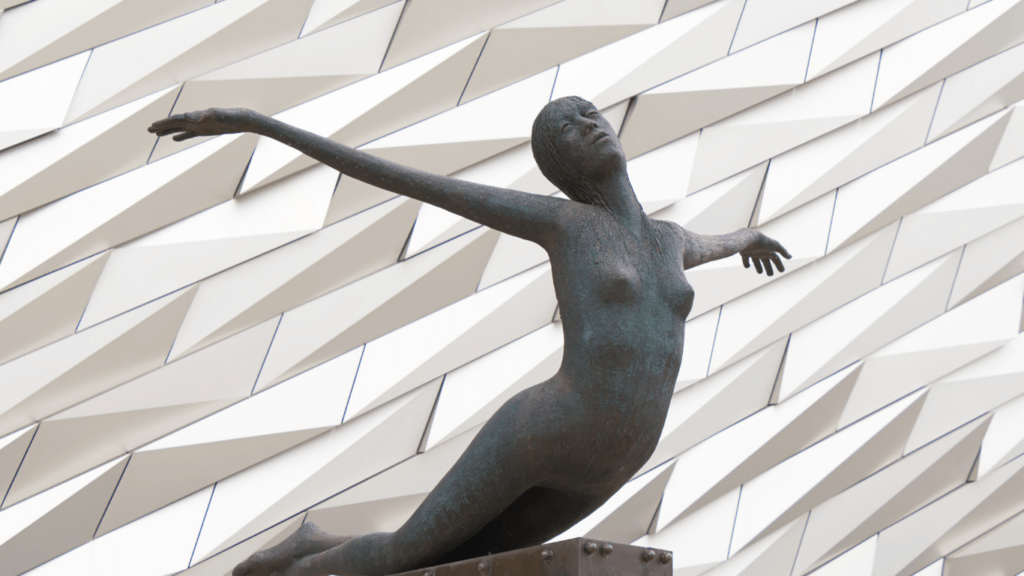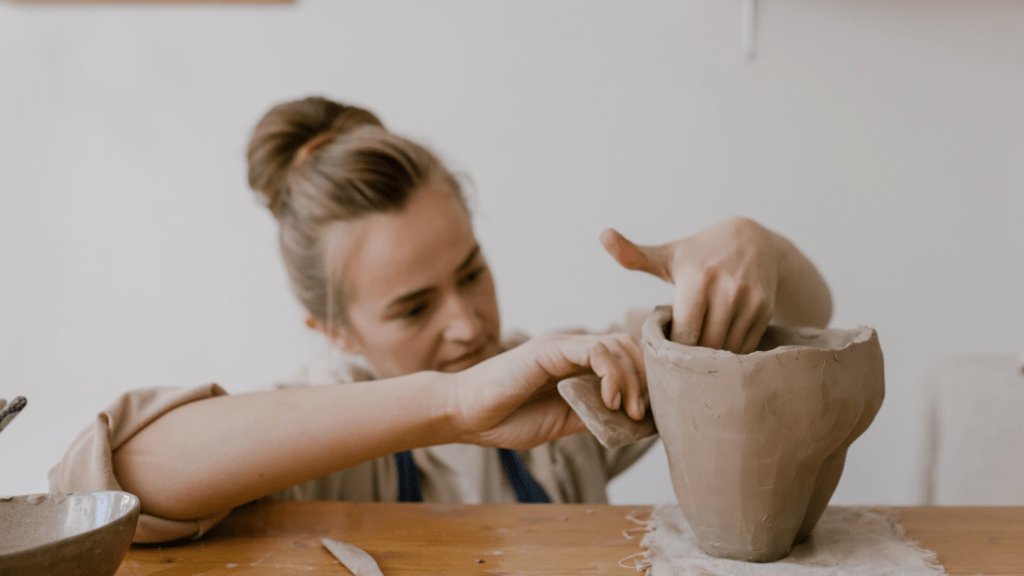As a seasoned blogger, I’ve delved into the profound impact of sculpture on shaping social and political movements. Sculpture, with its ability to transcend language and communicate powerful messages through artistry, has played a pivotal role in sparking change and provoking thought. From monumental statues symbolizing freedom to thought-provoking installations challenging societal norms, sculptures have been instrumental in driving movements forward.
In my exploration of the interplay between art and activism, I’ve witnessed how sculptures serve as tangible expressions of collective ideologies, rallying cries for justice, and poignant reminders of historical struggles. Through the lens of sculpture, we can unravel the complex tapestry of social and political movements, understanding the emotions, beliefs, and aspirations that fuel societal change. Join me as we unravel the intricate relationship between sculpture and the transformative power it holds in shaping our world.
Historical Context of Sculpture in Movements
Sculpture has played a pivotal role in various social and political movements throughout history. From ancient civilizations to modern-day protests, sculptures have been used as powerful tools for conveying messages, igniting change, and preserving the essence of movements. Let’s delve into the historical context of how sculpture has intertwined with societal and political changes.
Early Uses of Sculpture in Politics
In the early stages of human civilization, sculptures were not merely decorative but served as symbols of power, authority, and religious beliefs. Leaders and rulers commissioned sculptures to propagate their ideologies and solidify their positions in society. For example, the ancient Egyptians used sculptures to depict pharaohs as divine beings, emphasizing their god-like status and control over the masses. Similarly, Greek and Roman sculptures immortalized military victories, mythical narratives, and political figures, shaping public perceptions and affirming societal structures.
Throughout history, sculptures have been instrumental in shaping political narratives and ideologies. During the Renaissance period, artists like Michelangelo and Donatello created sculptures that celebrated humanism and classical virtues, challenging the existing power dynamics of the church and state. These sculptures not only reflected societal values but also sparked intellectual discourse and paved the way for cultural revolutions.
Key Sculptural Movements in 20th Century
The 20th century witnessed a surge in sculptural movements that mirrored the tumultuous political landscape of the time. From the avant-garde expressions of Cubism to the revolutionary ideologies of Constructivism, sculptors pushed the boundaries of traditional art forms to address social inequality, industrialization, and war. Artists like Pablo Picasso, Alexander Calder, and Louise Bourgeois used sculpture as a medium to critique oppressive regimes, advocate for human rights, and challenge conventional norms.
Moreover, the rise of public art installations and memorials in the 20th century transformed urban spaces into platforms for social commentary and collective mourning. Sculptures commemorating historical events, civil rights leaders, and victims of atrocities served as poignant reminders of past struggles and symbols of resilience. These sculptural interventions not only honored the memory of the marginalized but also redefined public discourse and ignited conversations about justice, equality, and remembrance.
The historical evolution of sculpture in social and political movements underscores its enduring significance as a catalyst for change, a mirror of societal values, and a beacon of hope in times of turmoil. The intersection of art and activism continues to shape the course of history, inspiring generations to rise against injustice, embrace diversity, and strive for a more inclusive future.
Symbolism and Significance of Sculptures
Sculptures play a crucial role in conveying messages that resonate with social and political movements. They serve as powerful visual symbols that communicate ideas, emotions, and values transcending language and time. From ancient civilizations to contemporary times, sculptures have been instrumental in shaping narratives and inspiring collective action.
- Conveying Social Messages
Sculptures act as a medium for artists to express societal issues and advocate for change. Through their intricate designs and symbolism, sculptures depict the struggles, triumphs, and aspirations of communities, offering a tangible representation of shared experiences. Artists use sculptures to raise awareness about injustices, inequalities, and marginalized voices, sparking conversations and fostering empathy among viewers. - Memorials and Public Awareness
In addition to social commentary, sculptures serve as memorials and public awareness tools, preserving historical events and honoring important figures. Public art installations commemorate significant moments in history, serving as reminders of past struggles and achievements. Memorials dedicated to civil rights leaders, revolutionaries, and victims of violence stand as testaments to resilience and serve as educational tools to inspire future generations towards creating a more just and equitable society.
Prominent Sculptures and Their Impact

Exploring prominent sculptures that have left a lasting impact on social and political movements showcases the power of art in shaping ideologies and narratives. Let’s delve into two significant case studies: The Statue of Liberty and the Vietnam Veterans Memorial.
Case Study: The Statue of Liberty
The Statue of Liberty, gifted to the United States by France in 1886, stands as a symbol of freedom and democracy. Designed by Frédéric Auguste Bartholdi, this colossal sculpture on Liberty Island in New York Harbor embodies enlightenment and opportunity for immigrants arriving in America. Its torch symbolizes progress and the path to a better future, resonating with the nation’s core values of liberty and acceptance. The Statue of Liberty continues to inspire generations worldwide, symbolizing hope, inclusivity, and the pursuit of freedom.
Case Study: Vietnam Veterans Memorial
The Vietnam Veterans Memorial in Washington, D.C., designed by Maya Lin, is a poignant tribute to the soldiers who served during the Vietnam War. Dedicated in 1982, this stark, black granite wall bears the names of over 58,000 men and women who sacrificed their lives in the conflict. The memorial’s reflective surface allows visitors to see their own reflections intertwined with the names, fostering a deeply personal and emotional connection. The Vietnam Veterans Memorial serves as a somber reminder of the cost of war, encouraging reflection, remembrance, and honoring the sacrifices made by those who fought for their country.
Contemporary Sculptural Movements
In the 21st century, sculptures have played a vital role in protests worldwide, acting as powerful symbols of resistance and resilience. Activists and artists use sculptures to convey powerful messages, evoke emotions, and challenge societal norms. These contemporary sculptures not only adorn public spaces but also serve as catalysts for social change and awareness.
21st-Century Sculptures in Protests
In recent years, sculptures have emerged as prominent features of protests, with artists creating impactful pieces to amplify voices and advocate for various social causes. These sculptures, often temporary installations in protest sites, capture the essence of movements, reflecting the struggles, hopes, and aspirations of the people. They serve as visual reminders of the need for change, inspiring solidarity and unity among protesters.
Digital and Interactive Sculptures
The digital age has revolutionized the field of sculpture, giving rise to digital and interactive artworks that engage audiences in new and innovative ways. Digital sculptures combine traditional craftsmanship with cutting-edge technology, allowing for dynamic and interactive experiences. These sculptures blur the lines between physical and virtual spaces, inviting viewers to participate actively in the artistic process and explore different perspectives. With the integration of digital elements, sculptures can reach a wider audience and adapt to changing societal dynamics, making art more accessible and inclusive.

 Karen Parker is a vital member of the Sculpture Creation Tips team, where her profound love for the art of sculpting is evident in every piece she works on. With years of experience and a deep understanding of various sculpting techniques, Karen has become a trusted mentor to both beginners and seasoned artists alike. Her dedication to the craft is matched only by her passion for teaching, as she creates detailed, easy-to-follow tutorials that help others bring their artistic visions to life. Karen's expertise spans a wide range of materials and styles, allowing her to offer invaluable insights that cater to a diverse audience. Whether through her hands-on guidance or her thoughtful advice, Karen's contributions are instrumental in nurturing a vibrant and supportive community of sculptors, all united by a shared love for this timeless art form.
Karen Parker is a vital member of the Sculpture Creation Tips team, where her profound love for the art of sculpting is evident in every piece she works on. With years of experience and a deep understanding of various sculpting techniques, Karen has become a trusted mentor to both beginners and seasoned artists alike. Her dedication to the craft is matched only by her passion for teaching, as she creates detailed, easy-to-follow tutorials that help others bring their artistic visions to life. Karen's expertise spans a wide range of materials and styles, allowing her to offer invaluable insights that cater to a diverse audience. Whether through her hands-on guidance or her thoughtful advice, Karen's contributions are instrumental in nurturing a vibrant and supportive community of sculptors, all united by a shared love for this timeless art form.
